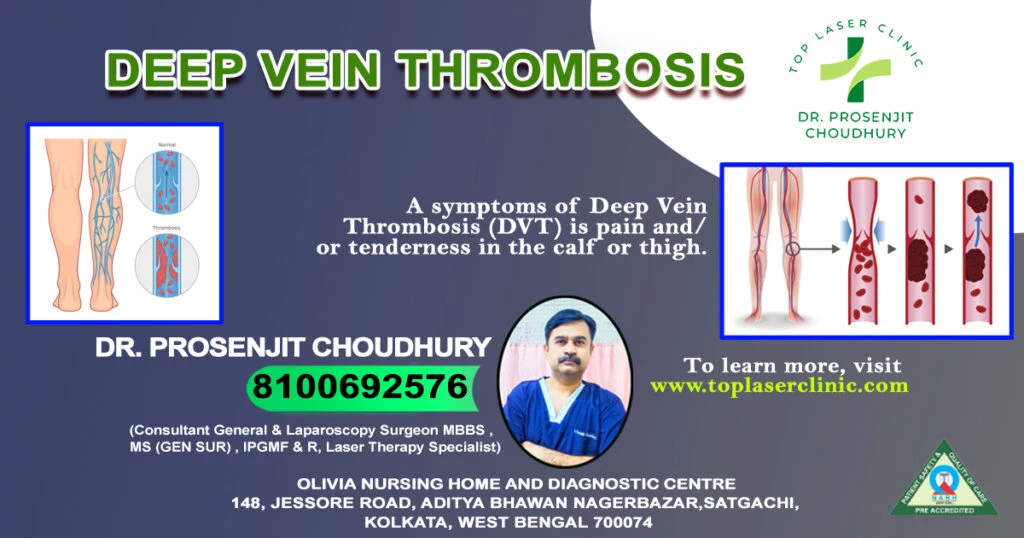
Deep vein thrombosis (DVT)and varicose veins are two distinct conditions related to the veins, but they have different causes, symptoms, and implications. Here’s a breakdown of the differences between DVT and varicose veins:
Table of Contents
1. Causes:
>DVT: Deep vein thrombosis occurs when a blood clot forms in one of the deep veins, usually in the legs. It can be caused by factors such as prolonged immobilization (e.g., after surgery or during long flights), injury to a vein, certain medical conditions (e.g., cancer, heart failure), hormonal changes (e.g., pregnancy, birth control pills), or genetic predisposition.
>Varicose Veins: Varicose veins, on the other hand, develop when the valves within the superficial veins of the legs malfunction. The weakened or damaged valves result in blood pooling in the veins, causing them to enlarge and become varicose. Varicose veins are primarily influenced by genetic factors, age, and lifestyle factors such as obesity and prolonged standing or sitting.

2. Vein Involvement:
>DVT: Deep vein thrombosis affects the deep veins, which are located within the muscles of the legs or arms.
>Varicose Veins: Varicose veins primarily affect the superficial veins, which are closer to the skin surface and are more visible. They are commonly found in the legs, specifically in the saphenous veins.
3. Symptoms:
>DVT: Symptoms of DVT may include pain or tenderness in the affected leg, swelling, warmth, redness, and sometimes a noticeable discoloration of the skin.
>Varicose Veins: Symptoms of varicose veins often include visible enlarged and twisted veins, aching or heavy feeling in the legs, swelling, itching, and skin discoloration around the affected veins.
4. Complications:
>DVT: One of the significant concerns with DVT is the potential for the blood clot to break loose and travel through the bloodstream, leading to a pulmonary embolism (a blockage in the lung’s blood vessels). This can be life-threatening.
>Varicose Veins: While varicose veins usually do not pose serious health risks, they can cause discomfort, pain, and aesthetic concerns for individuals. In some cases, they may lead to complications such as skin ulcers or bleeding.

5. Treatment:
>DVT: Treatment for DVT typically involves the use of blood thinners (anticoagulants) to prevent the clot from growing and to reduce the risk of pulmonary embolism. In some cases, more invasive procedures may be necessary to remove or dissolve the clot.
> Varicose Veins: Treatment options for varicose veins include lifestyle changes (such as regular exercise, weight management, and avoiding prolonged periods of sitting or standing), wearing compression stockings, sclerotherapy (injection of a solution into the vein to close it), laser treatments, or surgical interventions (such as vein stripping or endovenous procedures).